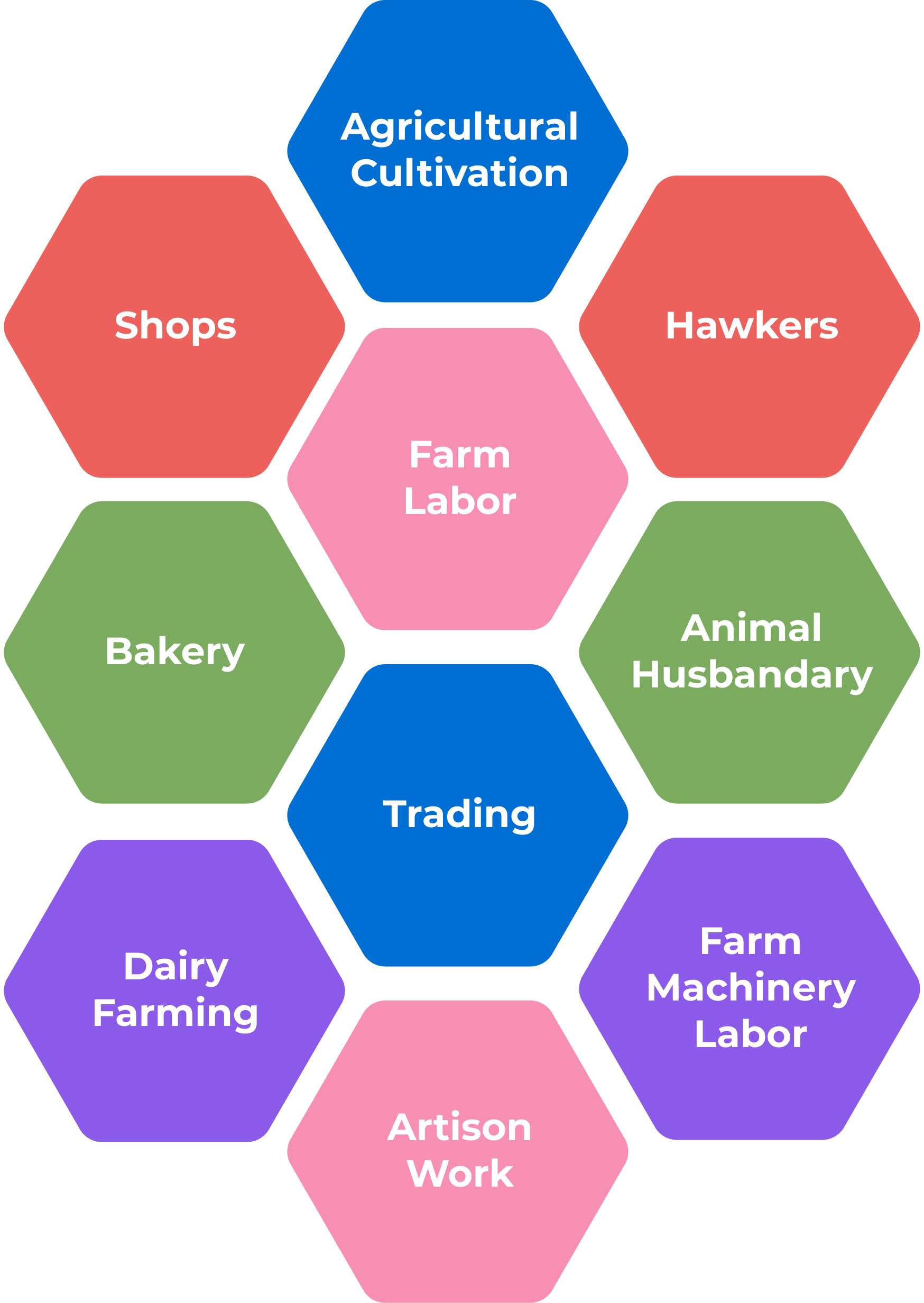
The Rural India
Livelihood sources of rural India are primarily agriculture and the agricultural based economic activities.We can see many sources but these entire local sources of economic activities fall under unorganized sector and volatile in nature.
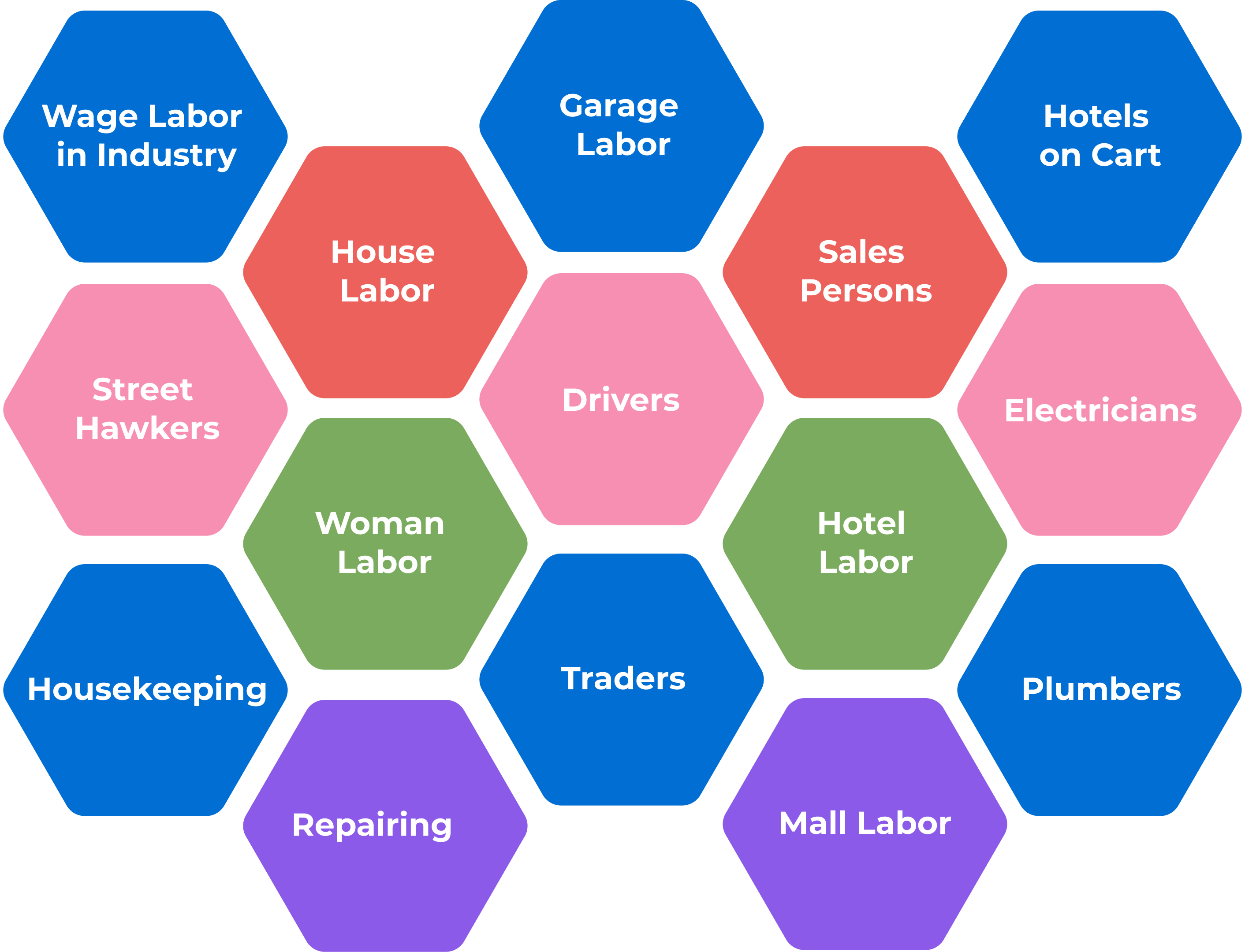
The Urban India
Earning sources for urban poor community are majorly divided into 3-4 categories unlike rural sources in bunch. But the community working is huge and the disparity is wide. We find earning sources for urban poor community.
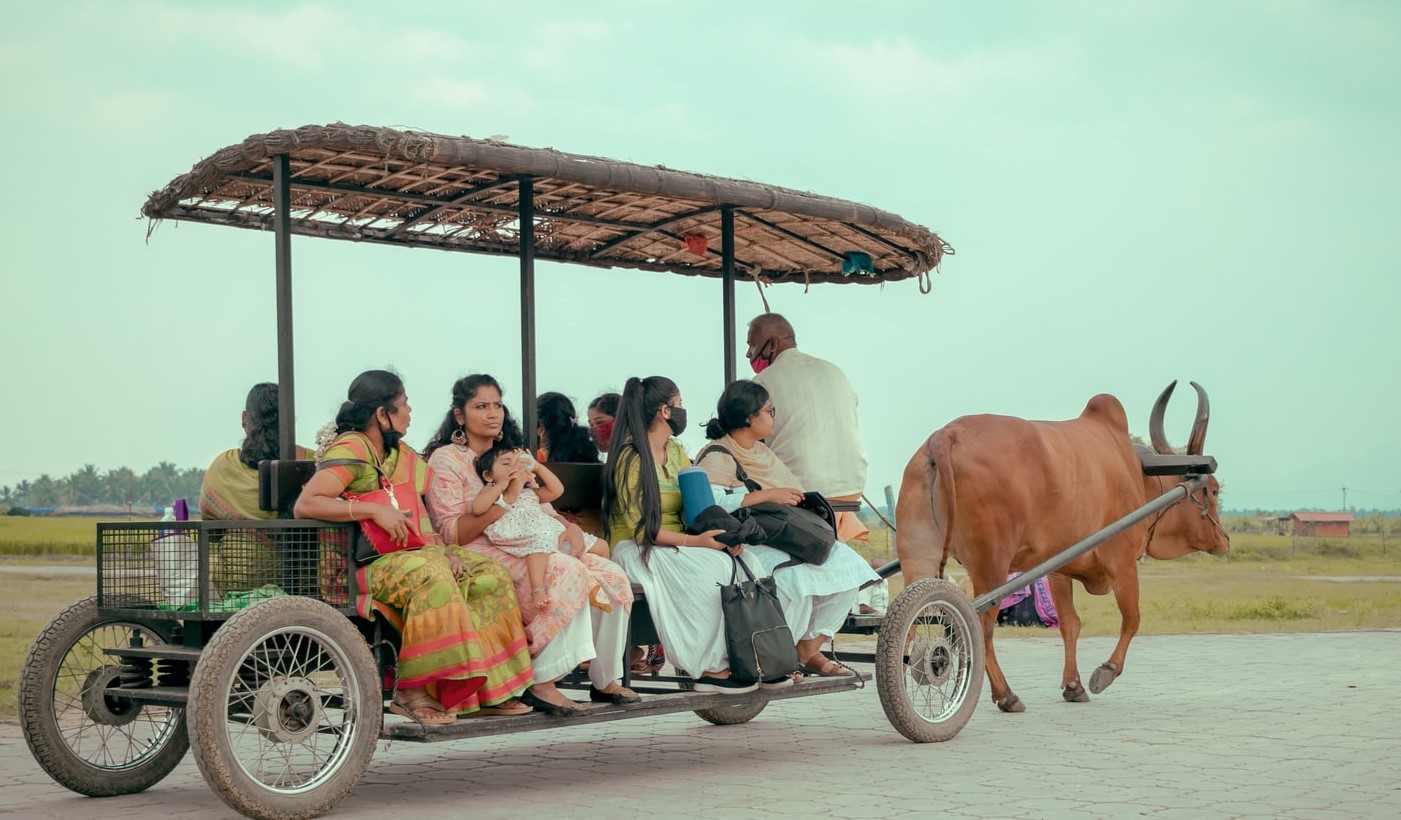
The need of 'Sustainable Livelihood'
It’s a fact that unless the bottom line of the pyramid is not strengthened then no nation would truly progress or gets fully developed in all the spheres of life. And that is the main reason why majority of the population in the world today needs sustainable livelihood programs. Our philosophy is even looking further of sustainable livelihood where we propose to enable beneficiary to become self sufficient by developing abilities for disruptive livelihood mindset and they can achieve it by adding more allied and needful sources of income with their basic support provided.

For example when we enable needy with a Cashew nut processing unit then he can add additional income source by goat farming, hatchery or a food factory for manufacturing food products of dry fruit like Namkin Cashew Nuts, Cashew based Sweets.
Cashew nuts processing being main unit, he can further involve woman members of family to run additional units of income generation.
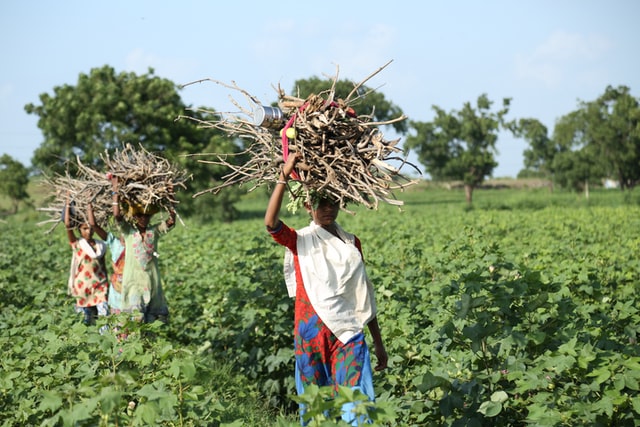
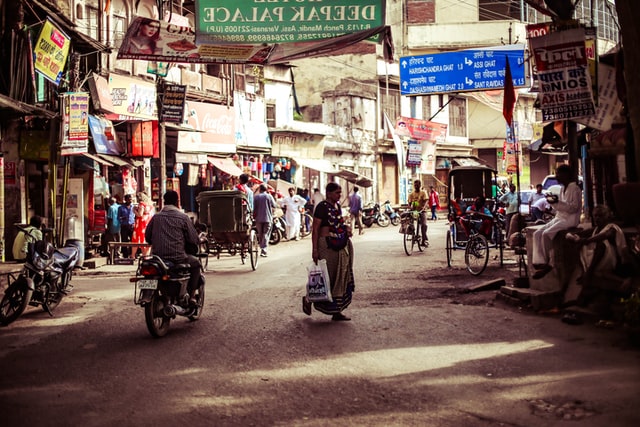
Livelihood issues in Urban India
Urban India faces different set of problems when it comes to livelihood. We have 30% urbanization in India and almost 35% - 39% of its population lies under poverty line. That actually outnumbers the rural poverty percentage. We generally tend to overlook that there such a huge population in urban India is below poverty line. That’s a big problem. We can find majority of the urban poor they work in Street workers (like hawkers, cobblers, sellers, cart pullers etc.), Self employed (like temporary food carts, accountants, professionals, marketers, sales persons, shops, clothes on carts, thelas etc.), Factory workers, hotel workers, waiters, workers in organized private sectors (housekeeping guys, delivery guys, office boys, labors etc.). All of their earnings are way below the standard expenses and are not capable to earn more and volatility of these professions makes them vulnerable to earn stable income for living.
Gap Finding
Rural
- 50% of the rural communities are still working in unorganized sector
- 38% of the rural population is below poverty line
- Majority of them have just completed / in completed school level education
- Even though majority of the income generation sources are agriculture based but we find only 20% of mechanization in farming comparing to 80% in developed countries.
- Rural citizens are not aware about how technology use in farming can reap benefits
- Migration to urban cities and towns for employment brings down the local economy substantially
- Irrigation area is comparatively low in India except certain areas that makes farmers to be dependent upon seasonal rains of crops
- Rural population is unaware about different sources of income from farming as well as farm based product processing
- Absence of market linkage brings losses to small and marginal farmers community
Urban
- In urban areas we can see lot of disparity between riches and poor
- Low education levels compels individuals to earn from unskilled labor jobs
- Jobs are temporary and daily wages based
- No stable income policies in place
- Self employed finds it difficult to manage inventory when the sale is unpredicted
- Overcrowded cities pushes poor individuals to slums or tin houses
- No jobs are permanent in today’s world
- Many educated professionals, skilled but uneducated individuals can’t start their business because lack of credit and no capital to invest
- Needy individuals and their families face health issues as they do not afford medicine
LightUp Lives have sensed the livelihood-need of the small and marginal farmers in rural areas of India as well as the livelihood need of urban poor. We defined a framework of value chain, which helps to generate sufficient income for their living. The structure of the model is prepared in such a way that addresses to make the beneficiaries self sufficient, takes the ownership of their enterprises builds leadership and responsibilities, become disruptive, brings delight in the communities in their near-by vicinity while lighting–up their lives.
Our Approach
LightUp Lives focuses with multipronged approach that leverages active participation from Educational sector, Government funding organizations and funding from companies in private sector to help beneficiaries becoming self sufficient and earn back their credit in the society.
Our aim is to develop an individual with skills, capable to use innovative equipments for processing raw produce, earn back their financial credits and sell the produce at a market rate to make reasonable profits. Our system is defined in such a way that ascertains end to end enablement of beneficiaries in rural and urban areas. We can observe that the marketplace is volatile and market dynamics are rapidly changing due to constant innovation and smarter technology usage by individuals. We plan to make each and every beneficiary to become disruptive and possess skills to add more sources of income on his own efforts post the initial enablement and support.
How we work?
1. We involve directly as an enabler -
Lightup Lives directly installs the projects for the needy farmers at their villages by providing income generating means of farm produce processing units like Rice mills, Tamarind processing, Dal mills, Hatcheries, Jaggery preparation units, Cashew nut processing units and more innovation for such units is incubated constantly.
Processing units acts as an additional source of income for beneficiaries, which is stable and sustainable. We provide trainings, support by creating a cluster center of certain villages at beneficiaries location and the local cluster center of micro enterprises further manages their final produce to sell in local market or through eCommerce in open market.
Similar to rural engagements, we drive enabling programs for urban needy community.
Beneficiaries are classified into following categories -
- Men/women self help groups
- Enthusiastic individuals who can take ownership and help others in the community as well
- Social organizations
Process to identify the right fitment -
- Hold meetings with the community. Explain to them the opportunity, their accountability and risks.
- Checklist for rigorous selection of the able and capable individuals
- Take help from local connect / voluntary organizations in identifying authentic groups / individuals who want to put efforts and make progress. Then identify 1 or 2 groups / individuals to participate in pilot projects
Engagement Structure -
- Identify genuine beneficiaries based on our beneficiary fulfillment criteria document and process
- Assess their need, make a plan and prepare projections
- Define the scope and the limits of the investment
Investment arrangements are fulfilled from various funding organizations - Agreement and repayment schedule gets signed up between Light-up Lives and beneficiary
- Distribute processing unit based on beneficiaries choices, preferences, necessity, capacities and passion
- Train the beneficiaries with various skills under our skill development program conducted by ISEWA
- Processed produce is sold through trustworthy buying channel partners for a better rate and to avoid unwanted influence of the buyers. That helps the community getting stable demand and maintain sufficient inventory throughout the year.
- Monitor and study the impact periodically
- Assess shortcomings, improvise and support beneficiaries
- Gentle follow up process for the repayment after 6 months of moratorium
- Repayment funds are further invested in new beneficiaries.
2. We engage educational organizations and use their innovation for farmer’s sustainable development projects -
We are engaging with educational organizations especially those are providing education in digital technologies, engineering and mechanical engineering. LightUp Lives provide support to these institutions for incubating ideas and awards their students for innovation. Our aim behind is to meet two goals.
- Engaging bright talents who can build innovative high tech agricultural equipments as their last year’s projects. Education organization gets an opportunity to involve in sustainable livelihood projects.
- Make use of Robotics, IoT, Ai and ML for rapid development of farmer’s livelihood. These technologies can help beneficiaries by addressing their issues such as unavailability of farm labor, saves time, easy monitoring, management using mobiles and manual work reduction at a cheaper cost. Moreover, mechanization can help small and marginal farmers to become independent and earn more by optimizing their tasks
Engagement Structure -
We appeal high tech educational institutions to contribute by participating in our nationwide farm-based high tech innovative product competition generated from their last year students and support the sustainable livelihood drive. Lightup Lives is committed to support the institutions with the information on the needs of the farmers to design innovative products and incubation facilities for the students to groom and develop the innovation.
LightUp Lives supports the students with an award of Rs. 1 lakh for the qualified innovative project ideas and product which are easy to replicate, implement at reasonable costs for the farmers.
3. We act as a mediator between funding organizations and beneficiaries -
LightUp Lives recommends genuine and right beneficiaries to funding institutions since it’s a complex task for funding organizations reaching to the right beneficiary. Simply because of their aims and targets are based on financial terms and not on social terms. So there exists a gap which is filled by LightUp Lives mediation. Similarly, majority of small and marginal farmer’s community is marked under NPA by most of the financial institutions due to various reasons. But Lightup Lives with their system, experience, and association with local NGO’s possess the acumen to select the right beneficiary and assist him with his funding needs from government, non banking or NABARD.
